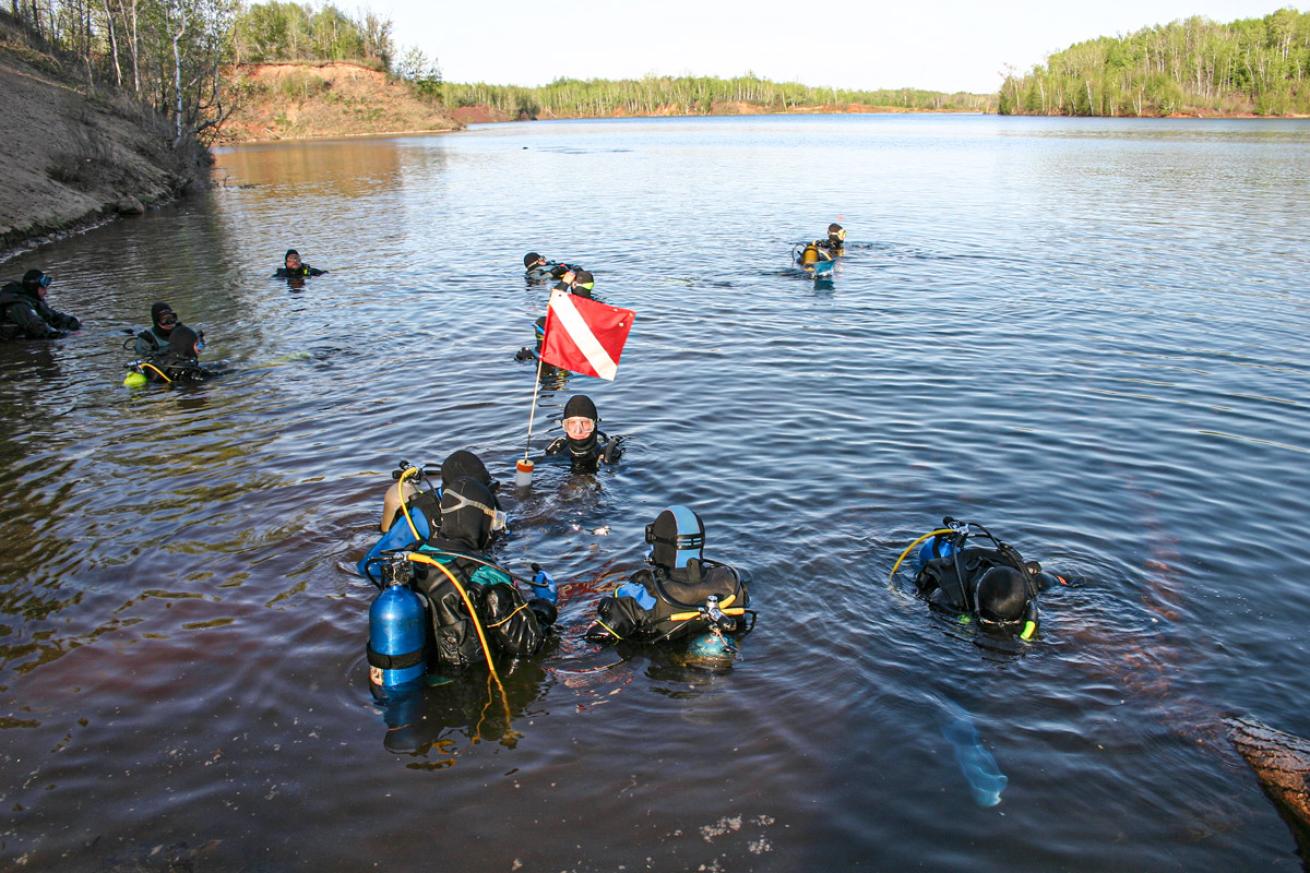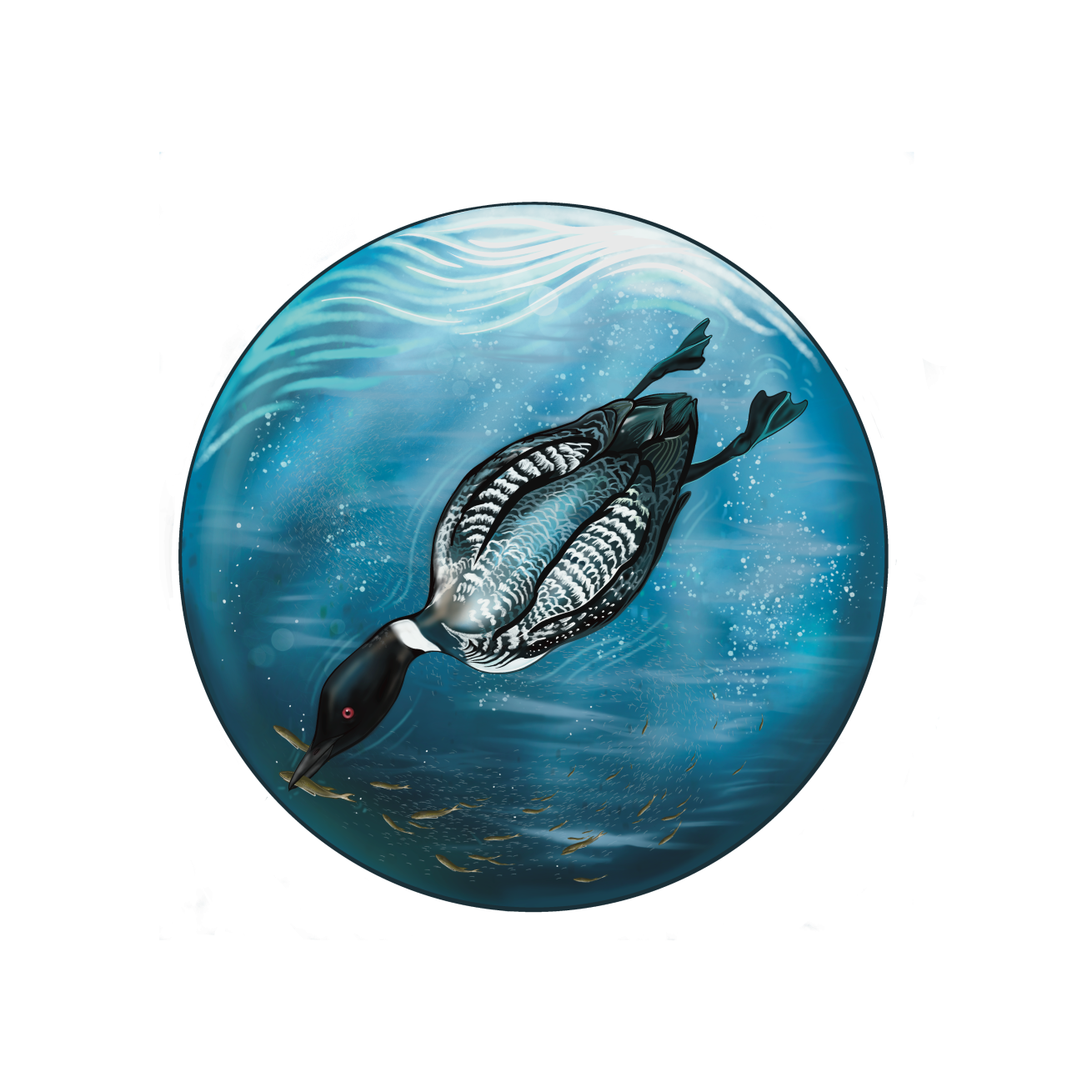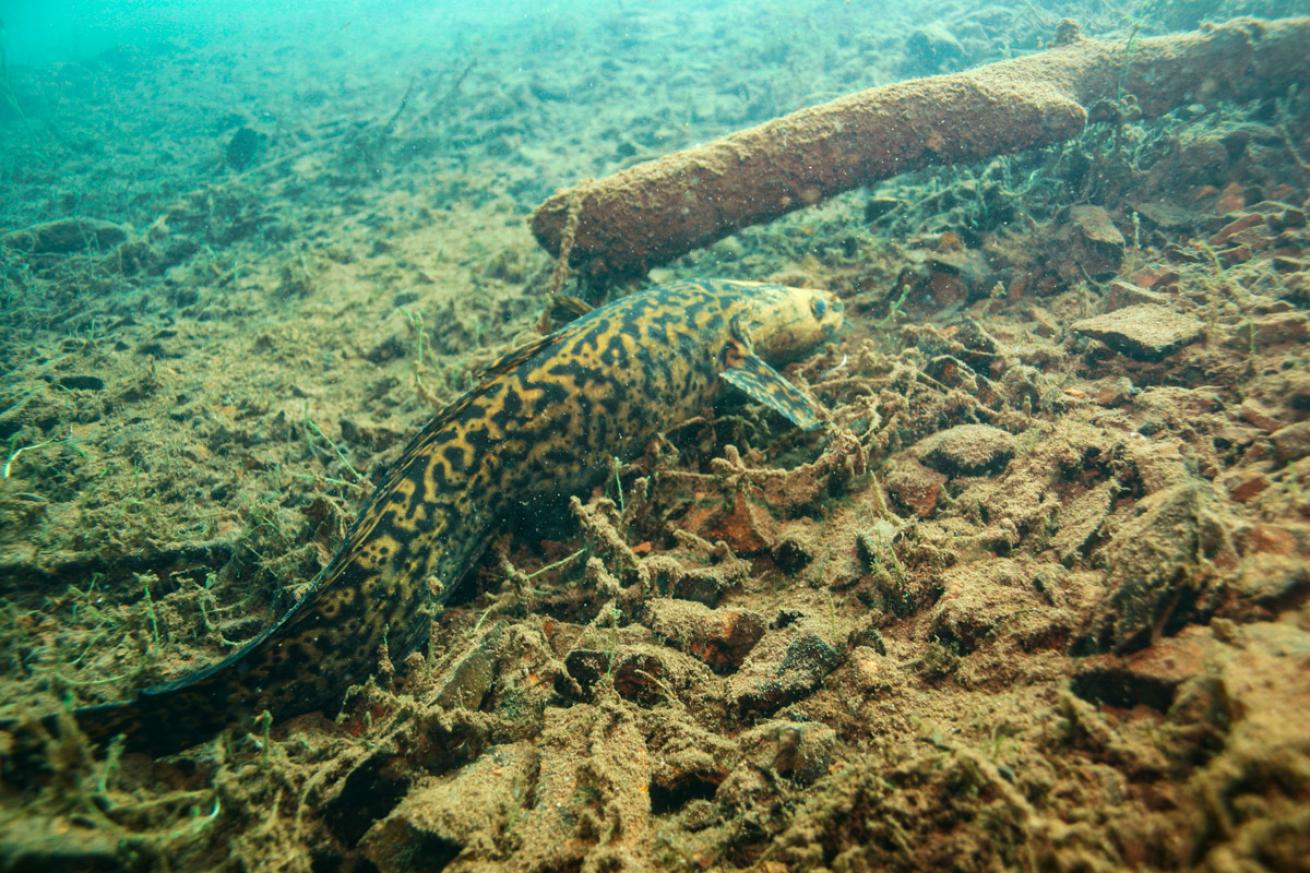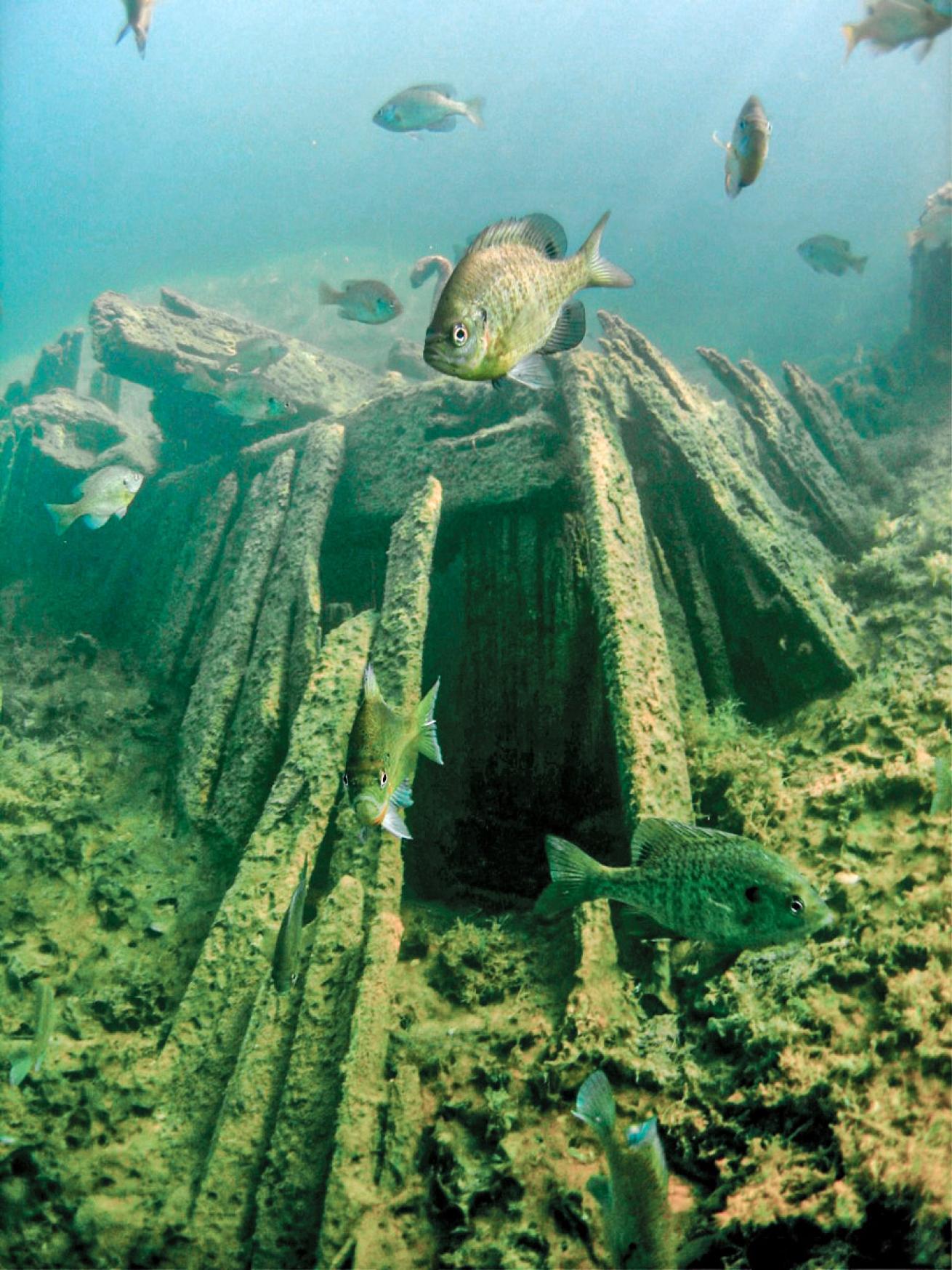Diving the Cuyuna Mine Pits in Minnesota

Todd MatthiesThe cold waters of the flooded Cuyuna mine pits serve as an ideal training environment and a home base for the local dive community.
It’s a weird but wonderful world! Instead of a coral reef, we have a whole forest of trees.”
Bill Lacroix, of St. Cloud, Minnesota, is an 83-year old retired college professor whose expertise in the field of industrial studies shaped his fondness for diving in the Cuyuna mine pits over the past 30 years. Although he will dive just about anywhere, Lacroix has a special connection to the flooded mines that are an indelible part of Minnesota’s local history—and the history of the United States.
“There are three main iron ore mines: Mesabi (two hours to the northeast) is still producing iron, and Vermilion and Cuyuna fed all our needs for metal for both World Wars,” says Todd Matthies, owner of Minnesota School of Diving in Brainerd, Minnesota. “Cuyuna is the smallest of the three.”
Related Reading: Diving with—and Saving—North Carolina's Sand Tiger Sharks
Today, 50 dive sites are scattered among 27 bodies of water at Cuyuna. Matthies describes them as “lake-size,” with some depths reaching 500 feet. He’s experienced visibility up to 80 feet on a single dive. Lacroix says most divers find a comfortable depth range around 100 to 130 feet. The local dive community has taken care to make this an inviting destination both for advanced divers and those with open-water certifications. Divers share the mines with fish like northern pike, walleye and sunnies; beavers shoot out of their dams; local avian celebrities (the common loon) sometimes surprise divers, their sleek bodies rocketing through the water in search of a snack. All the vibrant life contradicts what some people might envision when they think of an underwater mine.
“The color palette blows my mind,” says Molly Jordan, a diver from Brainerd who joined the dive community in 2020. “You’re weaving through trees and being careful not to catch your regulator hose, practicing your dexterity and movement underwater. It feels like you’re on another planet.”

Cassidy VincentThe common loon (Gavia immer) is Minnesota’s state bird.
SITE SPOTLIGHT
Divers may spy an unusual creature when descending into the mines—and no, we’re not talking about Jason Voorhees. The common loon (Gavia immer) is Minnesota’s state bird. Loons can be spotted beneath the surface on the hunt for fish. Their beady red eyes stand out from their satiny black heads, guiding their speckled bodies through the water. Loons are heavier and more skillful swimmers than other birds in northern Minnesota, where their breeding numbers are greater than pretty much anywhere else outside Alaska. Their unusual solid skeletal structure enables them to dive down more than 100 feet, giving them a legendary status among the divers who encounter them while exploring the mines.

Todd MatthiesDivers here can find several fish species.
About that underwater forest: “As the mines were active, there were trees growing around the rim of the hole you dug in the ground,” Lacroix explains. When the mines were flooded around 60 years ago, the trees remained standing vertically, creating a maze that divers navigate in 20 to 30 feet of water. “Some people think mines have sheer walls, but the contour of the underwater structure is actually quite nice,” adds Matthies. “There are terraced walls where the road goes down to the bottom of the mine. You follow the roadway down the gradual decline.”
Deeper down, railroad tracks trace the undulating landscape, where divers find man-made items left behind from the mining days as well as landmarks planted more recently: the diving community has sunk tiki bars, sailboats, and other objects in the silt.

Todd MatthiesDivers here can find remnants of long-ago mining operations.
Divers in the mood for a fun scare can even find a lifesize replica of slasher-film icon Jason Voorhees, of Friday the 13th fame, at depth in the Louise mine. “It feels like a horror movie when you’re going down there,” says blogger Doug Miller, whose footage of the statue can be found on YouTube. “The darkness, the sediment, the approach—that slow descent as you’re making your way down.”
Minnesota’s weather is notorious for heavy snowfall, but conditions can be surprisingly mild in the summer. Things warm up starting in May, when Minnesota School of Diving hosts regular fun dives at the mines. A robust dive community thrives around these group dives, with the seasoned veterans always willing to take newbies under their wing.
“It’s a very welcoming and nurturing group,” says Matthies, whose father, Bill, first opened Minnesota School of Diving in 1959. “A lot of them have close to 1,000 dives in the pits. They may have been to the same site 50 times but they enjoy taking newer divers.”
“Water as cold as this takes some getting used to,” Lacroix says, but the visibility is better than what you’ll find in a natural lake. Temperatures can rise into the 70s in July and August, Matthies says, then drop into the 50s below the first thermocline. After the second thermocline, around 60 feet, the water is about 30 degrees.
Related Reading: The Art of Breathing Underwater
NEED TO KNOW
Conditions
Year-round, filtered water and clear visibility are found throughout the mines. Surface temperatures reach the 70s in summer but drop at each thermocline.
How to Get There
The mines are about 30 minutes east of Brainerd, Minnesota, and are accessible by car.
When to Visit
The water is warmest in September.
What to Bring
A buddy and a 5 mm to 7 mm wetsuit or drysuit.
Local Resources
Minnesota School of Diving mndiving.com






